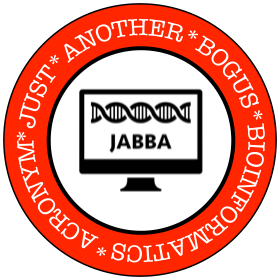Damn and blast…I can't think of what to name my software
As many people have pointed out on Twitter this week, there is a new preprint on bioRxiv that merits some discussion:
The full name of the test that is the subject of this article is the Bron/Lyon Attention Stability Test. You have to admit that 'BLAST' is a punchy and catchy acronym for a software tool.
It's just a shame that is also an acronym for another piece of software that you may have come across.
It's a bold move to give your software the same name as another tool that has only been cited at least 135,000 times!
This is not the first, nor will it be the last, example of duplicate names in bioinformatics software, many of which I have written about before.





